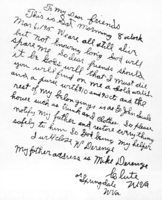 | Back to e-WV
| Back to e-WV
 The West Virginia Encyclopedia
The West Virginia Encyclopedia
 | Back to e-WV
| Back to e-WV
 The West Virginia Encyclopedia
The West Virginia Encyclopedia

In 1915, the New River & Pocahontas Consolidated Coal Company operated a series of drift mines at Layland, Fayette County, eight railroad miles north of Quinnimont. At 8:30 a.m. March 2, a blast swept through Layland No. 3 mine, killing 112 men. The explosion blew out the drift mouth and struck dead a grocery delivery man walking nearby.
Seven survivors exited the mine shortly after the explosion, giving hope to gathering crowds that others might be alive. Rescuers recovered several bodies during the next three days, and on March 6 five more survivors escaped the mine. These men had barricaded themselves from the afterdamp and rescuers learned from them that 41 men had done the same deeper in the mine. They hurriedly entered the mine and located a famished group of survivors. Fearing the worst, some of these miners had scribbled short notes to their loved ones.
Controversy surrounded the Layland disaster. When the secretary of the interior suggested gold medals for federal rescuers, state officials and local volunteers questioned the contribution of the federal team, and some individuals insisted that the trapped miners had been saved by their own wisdom. Federal representatives, using the latest methods, determined that the disaster resulted from the ignition of methane propagated by coal dust, but state officials insisted that careless blasting of a coal face produced the explosion.
Written by Paul H. Rakes
Humphrey, H. B. Historical Summary of Coal-Mine Explosions in the U.S., 1810-1958. Washington: United States Government Printing Office, 1960.
Report of the Department of Mines. Annual Report. 1915.